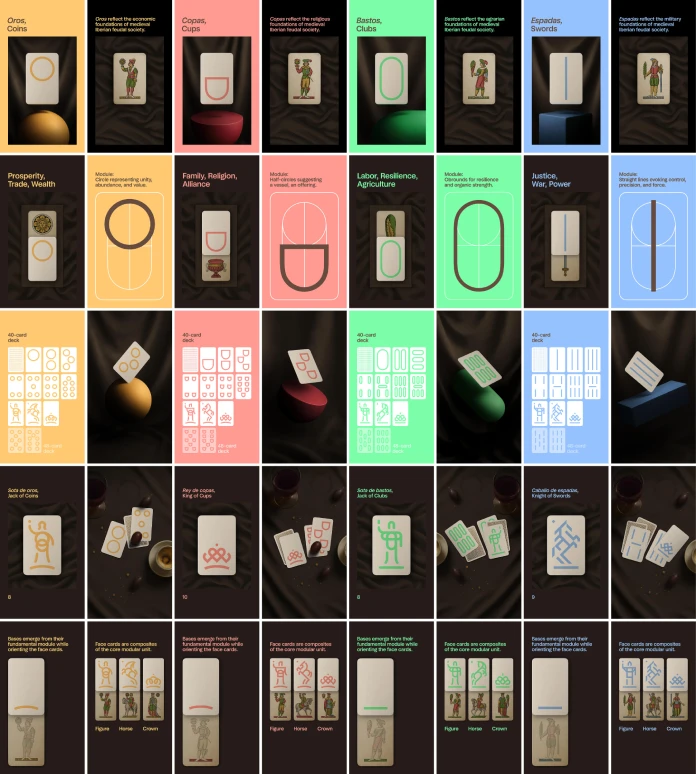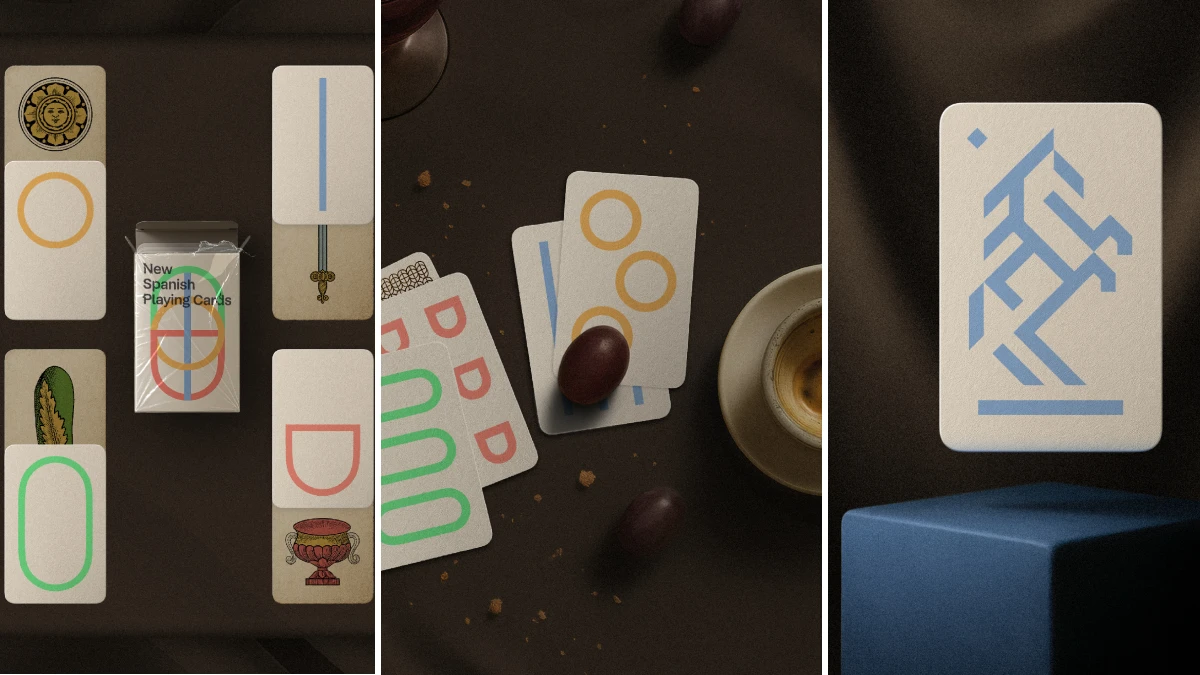A fresh perspective on a centuries-old tradition is quietly taking shape in the design world. The new Spanish playing cards, envisioned by designer David Genco, are a masterful exercise in reductionist design. This project is not merely a stylistic update. Instead, it is a thoughtful deconstruction and reassembly of a cultural artifact. The project is timely, launching pre-orders in Fall 2025, as minimalism continues to evolve towards more soulful expressions.
This contemporary redesign of traditional Spanish-suited playing cards employs essential reduction over reinterpretation. Consequently, each suit is distilled into a modular visual system. This system intentionally fuses cultural tradition with a minimalist aesthetic. The approach resonates with a growing movement to preserve cultural heritage through modern design. Therefore, it is relevant not just to card players, but to a wider audience interested in art and culture.

The What: Deconstructing a Cultural Icon
Spanish playing cards, or naipes, have a rich history dating back centuries. The traditional 48-card deck is divided into four suits. These are Oros (coins), Copas (cups), Espadas (swords), and Bastos (clubs). The suits are believed to represent different social classes of the feudal era. The merchants, the clergy, the nobility, and the peasantry are all represented.
Genco’s new Spanish playing cards honor this history profoundly. He does not replicate the ornate illustrations of the past. Instead, he abstracts them into their core geometric forms. This reductionist approach creates a recursive visual system. Every element, from the numbered cards to the face cards, emerges from the same fundamental geometry. The result is a deck that feels both timeless and entirely new.
A Modular System of Play
The true innovation in these new Spanish playing cards lies in their modular design. By breaking down the traditional suits into a simplified visual language, Genco has created a system that is both intuitive and elegant. This is a significant departure from the intricate designs of traditional Spanish decks. For example, it stands in contrast to the widely recognized Castilian pattern.
The Why: Cultural Preservation Through Design
This project is deeply personal for David Genco. He describes it as an exploration of cultural preservation, assimilation, and design storytelling. Genco’s work often explores the complexities of cultural identity. This deck of new Spanish playing cards is a manifestation of his experience. He views a familiar cultural object with both intimacy and the critical eye of a designer.
In our rapidly globalizing world, preserving cultural heritage is more important than ever. Design can play a crucial role in this process. It does so not by freezing traditions in time, but by reinterpreting them for today. Genco’s work is a prime example of how this can be achieved. Ultimately, it creates a bridge between the past and the present.
Minimalism and the New Spanish Playing Cards
The choice of a minimalist aesthetic is particularly poignant. Minimalism is moving away from cold, sterile designs. It is shifting towards a warmer, more human-centric approach. This “emotive minimalism” aligns perfectly with the goal of the project. It preserves the soul of the Spanish playing cards while stripping away unnecessary ornamentation. The focus on essential forms allows the cards’ inherent symbolism to shine through in a new and powerful way.
The How: The Making of a Modern Artifact
The creation of these new Spanish playing cards was a meticulous process. Genco delved into the history and semiotics of the cards. He worked to understand the cultural significance of each suit and figure. This deep understanding allowed him to distill the essence of the cards. The result is a cohesive and modern visual system.
The limited 48-card edition will be released with an accompanying book. This further positions the project as a significant cultural and artistic endeavor. The book will likely provide deeper insights into Genco’s design process. It will also explore the cultural context of the cards. Therefore, it will be a valuable resource for collectors and enthusiasts.
Pre-orders and Availability
Anticipation for this unique deck is understandably high. Pre-orders for the limited edition set of new Spanish playing cards and the book will open in the Fall of 2025. This release is poised to be a significant event for the design community. It will also appeal to anyone interested in the intersection of tradition and modernity.
A Fresh Perspective on a Timeless Game
What makes Genco’s project so compelling is its intellectual rigor. This is not a redesign for the sake of novelty. Rather, it is a thoughtful and critical engagement with a piece of cultural history. By choosing reduction over reinterpretation, Genco avoids a common trap. He does not create a pastiche of historical styles. Instead, he offers a new way of seeing and interacting with a familiar object.
This project also raises interesting questions. How can we honor tradition without being beholden to it? How can design be a tool for cultural evolution? Genco’s new Spanish playing cards do not provide easy answers. However, they offer a powerful and inspiring example of how these questions can be explored with creativity and intelligence.
As we look towards future design trends, Genco’s project is perfectly positioned. It is a testament to the power of design to not only reflect culture, but to shape it. This deck of cards is a conversation between the past, present, and future of design.
All images © David Genco. Check out other amazing graphic design projects created by talented designers from around the globe here at WE AND THE COLOR.
Subscribe to our newsletter!

















